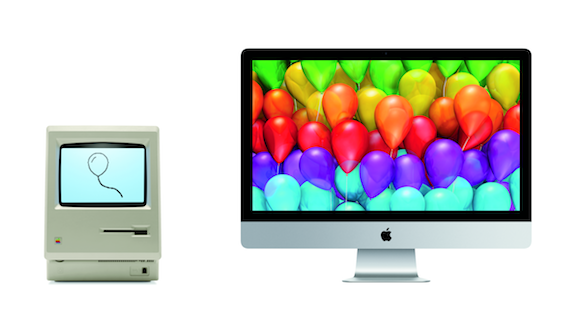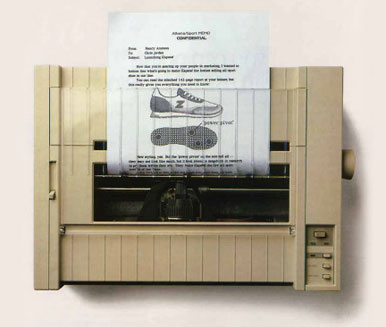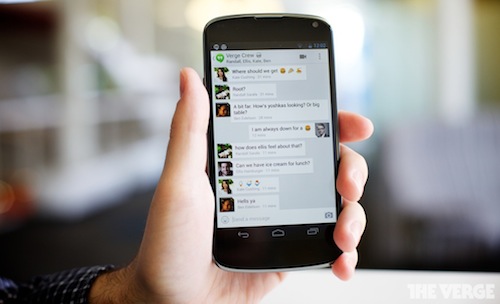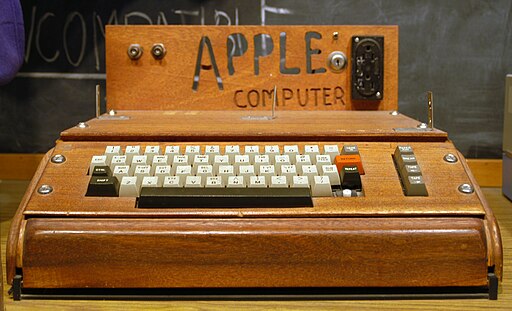A bit late for birthday wishes – but anyway: HAPPY 30th BIRTHDAY MACINTOSH! And it’s the best opportunity for at least the next 10 years to tell the story of how I met the Mac – the biggest technology love of my life.
It’s 1986, I’m nine years old and at my uncle’s home I see a computer for the first time in my life. And not just any computer – it’s a Macintosh 512k, also known as the “Fat Mac” because it had so much memory! I remember how I first had to switch on the electrical transformer and then the Mac, because my uncle had brought the machine back to Switzerland after having spent a year studying at UC Berkeley.
And then the Macintosh woke up, beeped, asked for the startup floppy disk and once found the smiling Macintosh icon appears and the computer started. While reading from the floppy disk, the machine made this weird but still familiar sound between bip bip and krrr krr – watching this video I feel thrown back to that very moment in my childhood.
No idea what I thought when I saw this machine running for the very first time. Above all I was very curious and wanted to try it out. During a short introduction my uncle showed me how to use a mouse – magic: you can lift it and the pointer stays where it is! And then he started SuperPaint and showed me some of its tools: the paint stroke, the pencil, the eraser and the paint bucket. During this intro I also learned my first English word (without knowing it…): “Undo”. A very important command indeed! Especially if you tried to fill an area with the paint bucket tool and the shape was not entirely closed – bam, and the entire drawing canvas would be filled with a brick pattern.
During that weekend at my uncle’s I spent hours and hours drawing lots and lots of stuff: houses, cars, planes, trains. And it’s not so easy, the mouse as a freehand drawing tool produces quite wacky lines and I hadn’t yet discovered the straight line and other tools. But the zoom functionality was great: you could go down to the tiniest details and see individual pixels!
And obviously I wanted to print my works of art and my uncle had just the right tool for that: the Apple ImageWriter dot matrix printer. Maybe the drawings are still somewhere in my parents attic.
Needless to say: I was in love with this piece of technology and what I could do with it. I figured the rest of the Mac out by myself by trying, clicking, opening, exploring programs on other floppy disks and later I played simple games like bricks, StuntCopter and some sort of space invaders type of thingy. Oh and another one of my favourites: writing stuff in MacWrite and changing the font to Zapf Dingbats? Amazing!
That same weekend I also met one of my uncle’s neighbours who was a computer scientist, I believe. And there I saw my first non-Mac computer: an IBM PC with a black screen and green blinking signs. I though: what is this? Really, is this a computer, too? No way!







